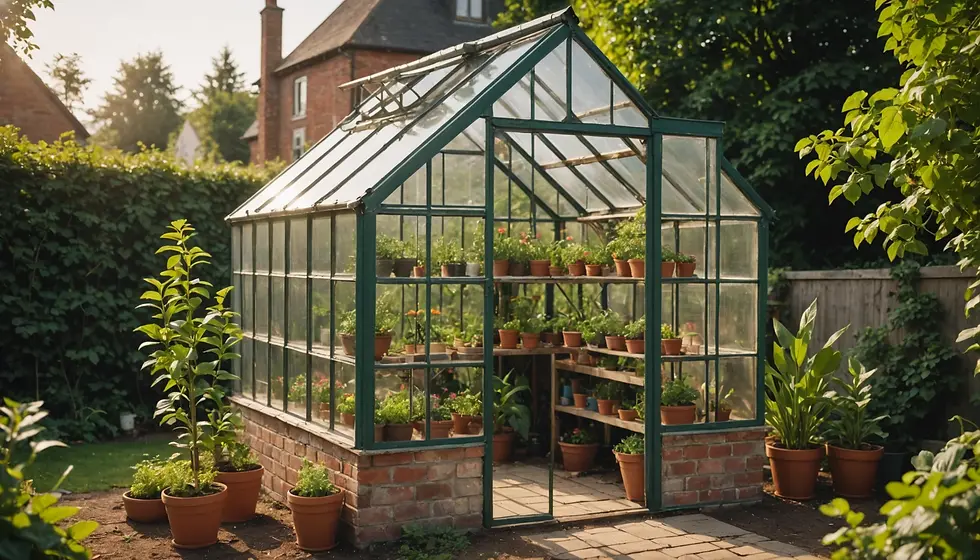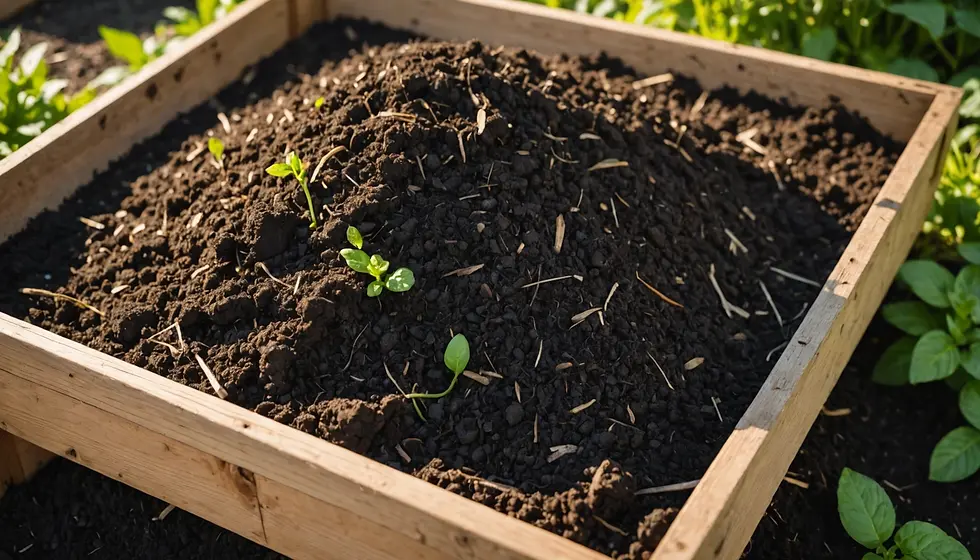Optimal Seed Planting Depths and Locations for a Flourishing Garden: Unveiling the Secrets
- Misty Rogers

- Jan 21
- 3 min read
Updated: Jan 26
Creating a blooming garden begins with grasping the basics of seed planting, especially the right depths and locations. For many new gardeners, these crucial details can often be overlooked but are key to successful growth. This post provides insights into the essentials of planting seeds, helping you unlock the full potential of your garden.
"Psst...see those links? They're Amazon affiliate inks! If you click on 'em and purchase something, I may get a tiny commission."
Understanding Seed Depth
Knowing how deep to plant your seeds is one of the first steps to successful gardening. The depth varies among different seed types, so it's essential to follow specific guidelines to ensure proper germination.
A general rule of thumb is to plant seeds at a depth that equals two to three times their diameter. For example, sunflower seeds, which are larger, should be planted around one inch deep. In contrast, tiny carrot seeds need only a thin layer of soil—approximately 1/8 inch deep.
Choosing the right depth not only protects seeds from drying out but also shields them from temperature fluctuations. If seeds are planted too shallow, birds or wind may expose them. On the other hand, seeds buried too deep might struggle to break through, potentially delaying germination—sometimes by weeks.
Choosing the Right Location
After determining the right depth, selecting the best location for planting is equally important. The right spot can enhance sunlight exposure, wind protection, and drainage, which are vital for healthy seed development.
Sunlight Requirements
Most garden seeds thrive in full sunlight, needing at least six to eight hours of direct sunlight daily. If your garden has areas shaded by trees or buildings, these spots might not provide adequate light for optimal growth.
For instance, tomatoes and zucchini flourish in full sun, while greens such as lettuce and spinach can tolerate partial shade. Grouping plants with similar sunlight needs can help you create a harmonious and thriving garden.
Soil Conditions
The soil type in your garden greatly impacts seed growth. Healthy soil should drain well and be rich in organic matter. Consider conducting a soil test to determine its nutrient levels and pH. If your soil is too acidic, amending it with lime can raise the pH, allowing for better growth.
Look for areas that hold moisture without becoming soggy. A well-drained soil structure provides better root development, helping plants access essential nutrients and water more efficiently.
Wind Protection and Microclimates
Wind can be detrimental to seedlings, especially fragile ones. Choose spots that offer natural wind protection. Planting near fences, mature shrubs, or other structures can act as a shield against strong winds.
Understanding microclimates within your garden can also boost your planting strategy. Microclimates are small areas with unique climate conditions. For instance, a spot that warms early in spring can benefit heat-loving plants, while shadier areas can support moisture-loving plants. Observe sun exposure and temperature differences across your garden to identify these beneficial microclimates.
Companions and Planting Techniques
Using companion planting is another effective strategy for enhancing growth and pest resistance. Some plants work well together, such as marigolds, which deter pests while adding vibrant colors to your garden.
Employing solid planting techniques is equally vital. For instance, some plants like peppers and tomatoes thrive when started indoors before being transplanted outside. This approach allows you to get a head start during shorter growing seasons, leading to earlier harvests.
Timing Is Everything
When you plant can be just as important as where you plant. The last frost date in your area will indicate when it is safe to plant seeds outside. For heat-loving crops like beans and squash, wait until the soil reaches around 60°F, usually in late spring.
Keep an eye on local weather conditions. If cool temperatures hit unexpectedly, using row covers or cloches can protect tender seedlings from frost damage, ensuring a more successful growing season.

Cultivating a Thriving Garden
Planting seeds at the right depth and in suitable locations is essential for a flourishing garden. By understanding the principles of seed depth, choosing optimal locations with adequate sunlight and soil conditions, and incorporating companion planting strategies, anyone can enhance their gardening success.
Focusing on timing and paying attention to microclimates will further elevate your gardening experience. Whether you are new to gardening or have years of experience, remember that the keys to a successful garden are rooted in these straightforward yet effective practices. Happy planting!





Yorumlar